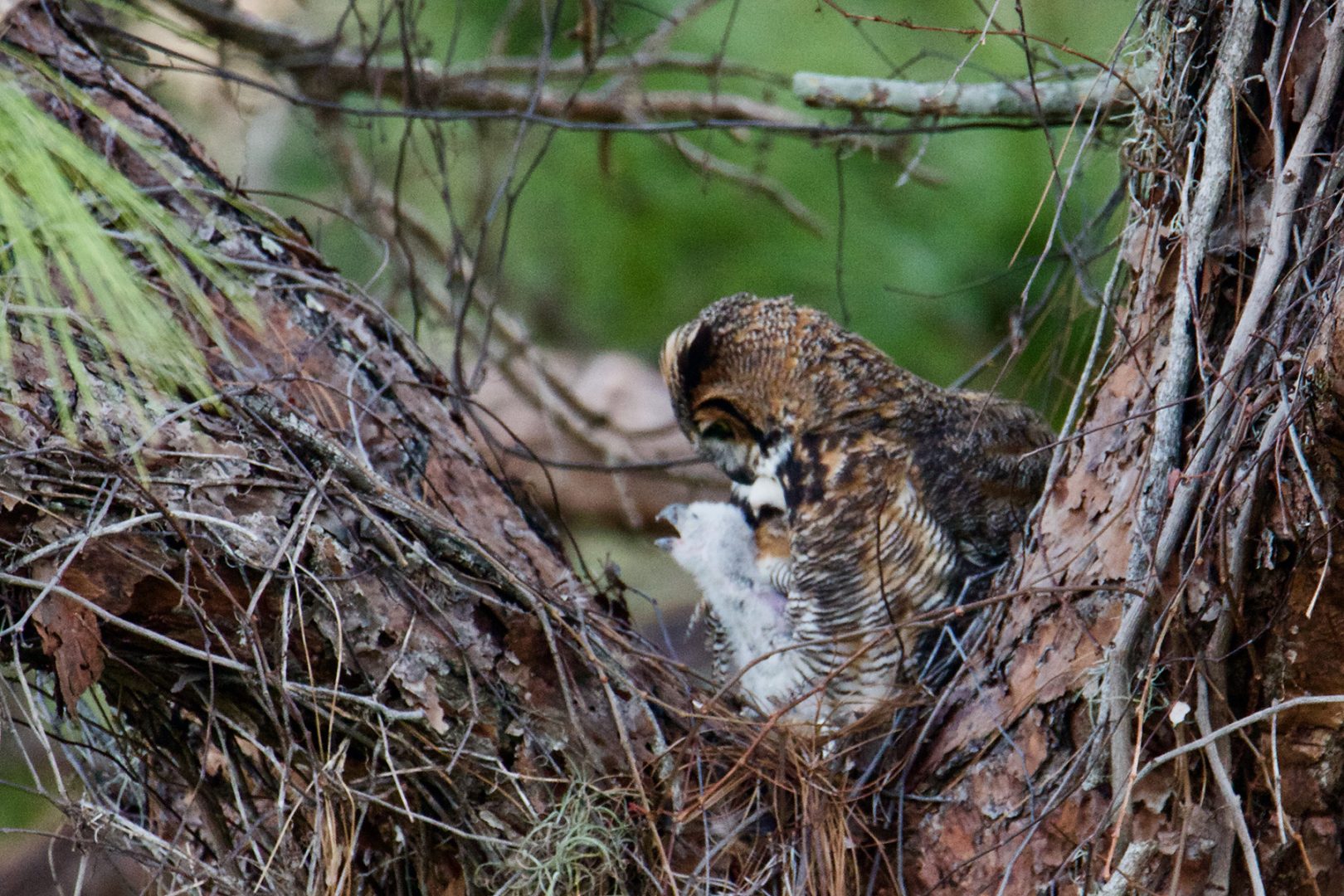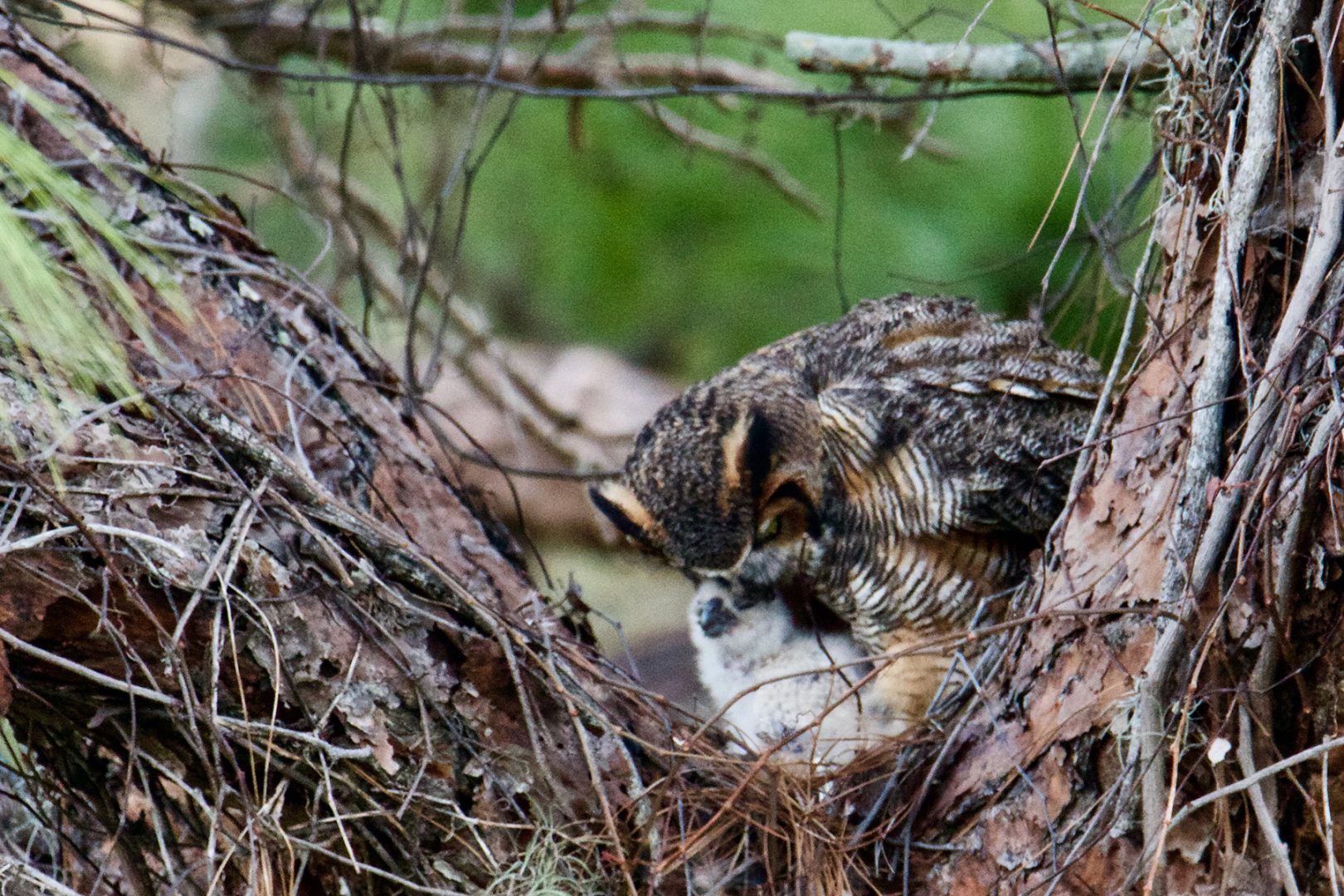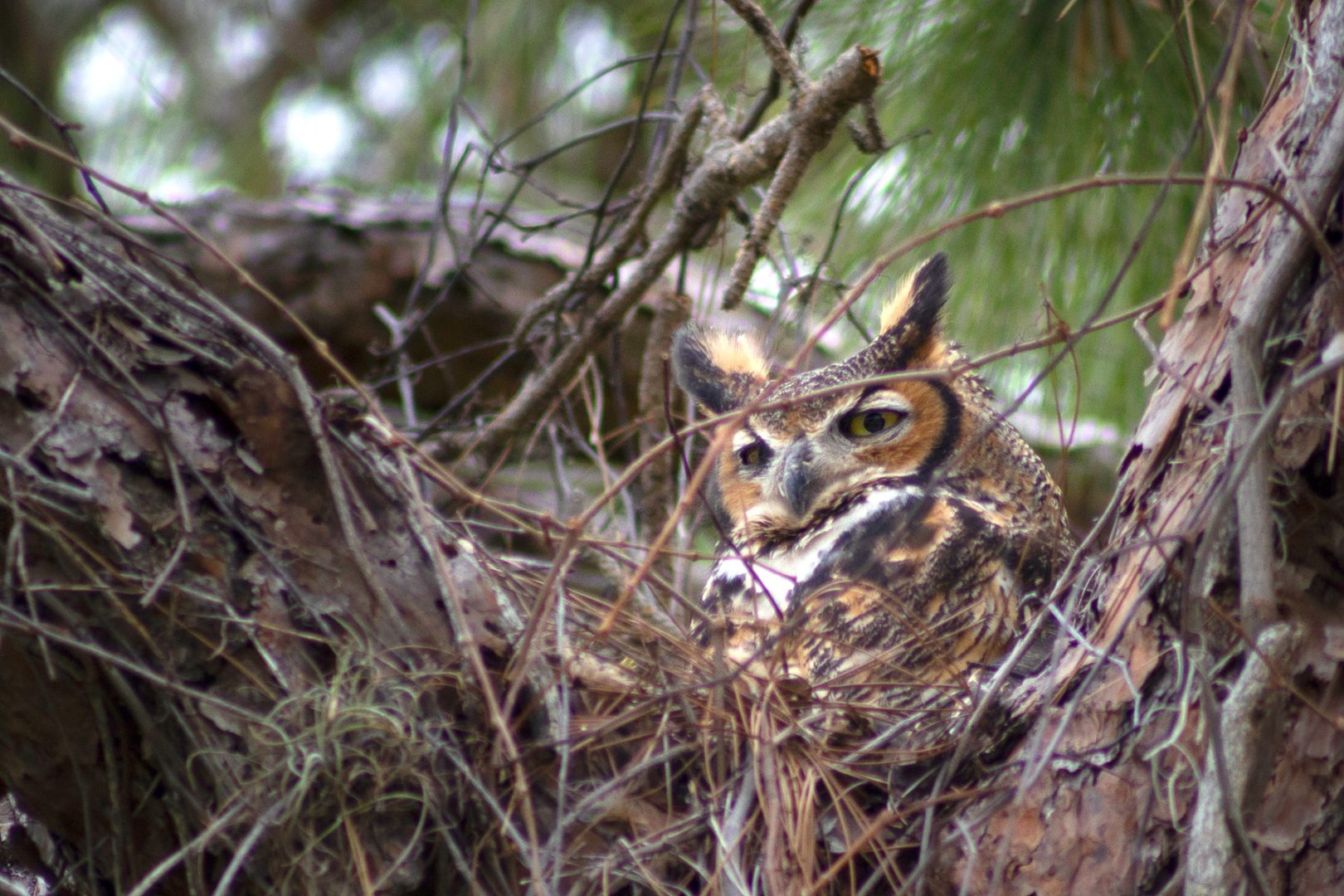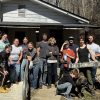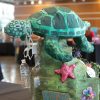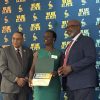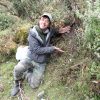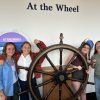Ellis West was a student in professor Elizabeth Forys’s field ornithology Winter Term class last January 6 when she was walking back to her dorm around sunset. A sophomore environmental studies student from Butler, Pennsylvania, Ellis heard what she knew from her research was a Cooper’s hawk.
“I looked up to see the hawk was yelling at a great horned owl that was sitting nearby,” Ellis recalls. “I was really excited because I see owls all the time in a sanctuary. But this was the first wild owl that I’d seen. I stood there for 10 minutes until the hawk flew back into a different tree.”
Ellis emailed Forys soon afterward and returns to the area as often as she can to watch what are now a pair of owls and their chicks. “It’s really important to me,” says Ellis, who volunteers at the Seaside Seabird Sanctuary in Indian Shores. “And it’s something that really makes me happy.”
She named the owls Link and Zelda.
How the owls came to nest on the Eckerd campus is something of a minor miracle. Professor of Environmental Science and Biology Beth Forys, Ph.D., is also the faculty adviser to the Ornithological Society of Eckerd College.
“Great horned owls are relatively common,” Forys explains. “But there have been major issues of them dying recently because of anticoagulant pesticides. Eckerd has transitioned away from that, so our owls have been successful. We’ve had them nesting here five times in the last 20 years.”
The gestation period for great horned owls is about 40 days, Forys says, adding that owls typically don’t build their own nests but instead steal a nest of another bird or use an osprey platform. “This nest is interesting,” Forys says, “because it’s in a natural spot in an older pine tree.”
Like many unusual bird or animal sightings, privacy can be an issue. When a pair of nesting owls was discovered on campus in 2015, a man not connected with Eckerd brought a ladder to the tree, climbed up and came within 10 feet of the birds. Forys, and the College, want to discourage that kind of up-close birdwatching, so the exact location of this nest will not be revealed here.
“One year we had a pair of owls that nested in one of the stadium lights on the baseball field,” Forys recalls. “The players were practicing just about every day and the owls were okay. Where the nest is now, the owls also see a lot of people, but they still chose that spot. I think that’s because everyone is enjoying watching them in a respectful way. I also think it’s a sign that Eckerd does manage its resources to promote biodiversity. It’s a pretty healthy ecosystem we have on campus.
Scott Burnett, Ph.D., professor of anthropology at Eckerd, is one of the faculty members to get a glimpse of the owls. Last month he noticed a student looking up into a tree. “She said there are owls out here,” he recalls. “Wildlife watching is a hobby for me and my family. My son and I built a screech owl nest box in our backyard years ago. Owls moved in and we watched them fly in and out for months.”
Using his spotting scope and a camera with a zoom lens, Burnett set out to watch and document these new, much larger owls. Sometimes he comes over the weekend and ventures out at sunrise or sunset to photograph or film the birds.
“There are at least two chicks now,” he says. “I’ve spent five hours over the last week watching them. The female mostly, because she’s at the nest. This morning she didn’t react too well to one of the golf carts from the maintenance crew. But it was interesting to see her react when she heard a squirrel on a tree near the nest.”
“It gives me a feeling like I peeked behind nature’s curtain,” he adds after a moment. “It just enriches my day.”






